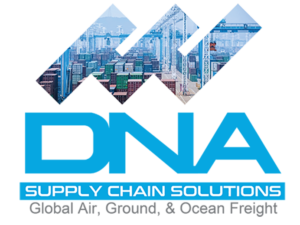What is VGM in Shipping? Each year, the sea takes 1,500 cargo containers by accident or other catastrophes. Accurate weight recording can frequently distinguish between a safe voyage and a disaster.
Because of this, cargoes must have their verified gross mass before the vessel has loaded, either as a component of the shipping specifications or in a distinct communication before the day of leaving, according to the International Maritime Organization’s Safety of Life at Sea (SOLAS) regulations.
Continue reading to learn more about VGM and how it can affect your business.
What is VGM in Shipping | SOLAS Verified Gross Mass Declaration
The International Convention for the Safety of Life at Sea’s SOLAS VGM (Verified Gross Mass) is a statement of the precise gross mass of a filled container. It is also necessary to disclose the combined mass of all vessels loaded aboard a shipping vessel.
Although declaring the gross mass of every container has always been necessary, verifying the mass offers an additional layer of protection, it verifies the information provided by carriers to guarantee adequate cargo stacking and placement on vessels to prevent collapse and loss.
The SOLAS VGM criteria have no exceptions to the rule. Containers belonging to shippers who cannot provide a valid VGM certificate will not have permission to load.
What is SOLAS in Shipping
An international maritime treaty known as the Safety of Life at Sea Convention (SOLAS Convention) mandates that containers’ gross weights get their verification before aboard ships. This rule forbids the placement of a packed container onto a vessel except if the ocean operator has the notice of the verified gross mass (VGM) in advance.
The IMO has developed these standards because the effects of a weight declaration error could be detrimental to the safety of the ship, crew, equipment, and workers on land. The SOLAS VGM’s two primary and obligatory requirements are as follows:
The person who must supply the certified weight is the shipper or exporter. It must be present on the shipping document and given to his agent (the freight logistics company), who will give it to the port in time for the ship’s stowage strategy to get ready.
A packed container must meet the verified gross mass requirement before loading onto a ship. In other words, vessel owners can only put containers aboard their vessels whose weights have been confirmed.
What is the importance of SOLAS
The SOLAS Convention’s primary goal is to lay down minimum requirements for the design, furnishing, and management of ships that are consistent with their security. The establishment of procedures and policies by importers, freight forwarders, container operators, and port facilities is necessary by this law, which is applicable globally.
The shipper listed on the Bill of Lading gets necessary by law to supply the VGM details. It is also crucial to ensure that the VGM data is processed promptly, accurately, and distributed to the appropriate, relevant parties in cargo operations. Agility will assist you in promptly providing the carriers with the necessary information. Additionally, it monitors the processing of VGM to ensure that no delays occur.
Moreover, it is important to learn all about Bill of Lading Rules and Regulations
Importance of SOLAS in Shipping and Maritime Operations
Of all the international accords governing the security of merchant ships, the SOLAS Convention is the most significant. This Convention’s primary goal is to lay down minimum requirements for ship design, furnishing, and management. In reaction to the Titanic disaster, SOLAS’ initial version started in 1914.
According to the SOLAS rule, these criteria make choosing a portable environment testing device for enclosed places easier. The Revised guidelines for accessing enclosed compartments onboard seagoing vessels and this SOLAS rule got meant to get read together. They are not a benchmark for such equipment’s performance.
It should be there that, provided the vessel’s three distinctive properties and processes, additional atmospheric dangers in confined areas may exist that are not detectable by the device by these regulations. In such cases, different appropriate instruments must get carried, if known.
How to Calculate VGM in Shipping
There are two methods for calculating the Verified Gross Mass of your container. While shipping, the exporter must either determine the VGM or request that the driver stops at a weighing facility.
- Method 1:
The first method of measuring VGM entails weighing the loaded and closed carton with your cargo inside using a calibrated and certificated weighing bridge. These weighing channels can also get present inside or outside of port terminals.
- Method 2:
The weights of all container contents are present in the module’s tare weight for the next method of assessing VGM. It also gets available on the package’s safety certification plate (or CSC plate). In most situations, this gets present on the side of the container’s door.
SOLAS Charges in Shipping
Since the SOLAS VGM rule took effect on July 1st, moving containers has become more expensive. When one’s supply chain gets disruption, there is a risk of considerable financial loss. Therefore, It goes beyond the price of making and delivering a VGM certificate.
Read More
Bill of Lading Rules and Regulations
Trends Freight Forwarding Industry
Certainly, It will be helpful for others if you share this piece of information with them by Using the social media buttons below.









